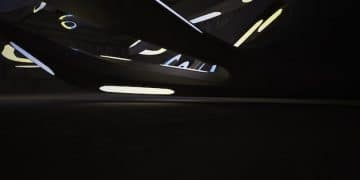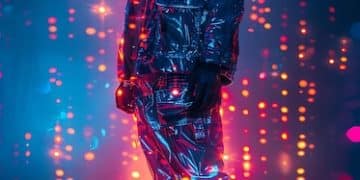Upcycled Fashion: New Trends from Old Clothes
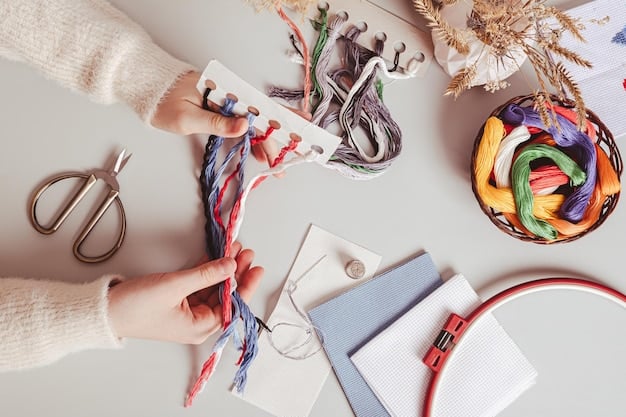
Anúncios
Upcycled fashion, a groundbreaking movement, reimagines discarded garments into new, stylish apparel, offering a sustainable and innovative response to the environmental challenges posed by the traditional fashion industry.
Upcycled fashion is more than just a trend; it’s a transformative movement revolutionizing how we perceive and consume clothing. By converting discarded materials into new garments, this innovative approach merges creativity with sustainability, redefining modern style.
the genesis of upcycled fashion
The concept of upcycling, while seemingly new, has roots in historical practices of resourcefulness and frugality. Before the era of fast fashion and mass production, repurposing clothing was a common necessity rather than a stylistic choice. Garments were mended, altered, and transformed to extend their lifespan, often by hand. This pragmatic approach laid the groundwork for what we now understand as upcycling, albeit without the explicit environmental consciousness that defines the modern movement.
The modern upcycled fashion movement, however, gained significant traction in the late 20th and early 21st centuries. This rise was propelled by two primary forces: a growing global awareness of environmental degradation and a burgeoning demand for unique, individualized style. As the textile industry became notorious for its vast carbon footprint, water consumption, and chemical pollution, consumers and designers alike began seeking more sustainable alternatives. Upcycling emerged as a powerful solution, directly addressing waste by giving discarded materials a new purpose and a higher value—transforming “trash” into “treasure.”
from necessity to contemporary art form
What sets modern upcycled fashion apart is its evolution from a mere act of necessity into a sophisticated art form. Designers are not just mending clothes; they are deconstructing, reinvisioning, and reconstructing them into entirely new pieces that often bear little resemblance to their original components. This creative metamorphosis requires a unique blend of technical skill, artistic vision, and an understanding of fabric properties. The result is clothing that is not only sustainable but also embodies a distinct narrative, often reflecting the history of its constituent parts.
- Artistic Expression: Upcycling allows designers unparalleled freedom to experiment with textures, patterns, and silhouettes. Each piece is inherently unique, carrying its own story.
- Waste Reduction: By diverting textiles from landfills, upcycled fashion directly combats pollution and resource depletion associated with clothing production and disposal.
- Resourcefulness: The process encourages creative problem-solving, pushing the boundaries of traditional garment construction and material use.
The embrace of upcycling by both mainstream and independent labels signifies a broader shift in fashion values. It challenges the conventional linear model of production (take-make-dispose) by advocating for circularity. This paradigm shift encourages a more mindful approach to consumption, where longevity and intrinsic value supersede transient trends. The genesis of this movement is a testament to human ingenuity in adapting to environmental challenges, proving that style and sustainability can, and indeed must, coexist.
This foundational understanding of upcycled fashion’s origins helps contextualize its current significance. It moved from a practical solution rooted in scarcity to a deliberate choice driven by environmental ethics and a desire for unique aesthetics. This evolution underscores a larger societal transformation towards valuing resources and craftsmanship over disposability, positioning upcycling as a cornerstone of the future of sustainable style.
the environmental imperative: why upcycle?
The fashion industry is a colossal contributor to global pollution, often dubbed one of the most polluting sectors worldwide. From the intensive use of water and pesticides in cotton cultivation to the chemical-laden dyeing processes and the massive energy consumption of manufacturing, every stage of conventional garment production leaves a significant environmental footprint. Add to this the staggering volume of textile waste—millions of tons of discarded clothing ending up in landfills annually—and the scale of the problem becomes starkly evident. This linear economic model, characterized by “take, make, dispose,” is unsustainable and places immense pressure on our planet’s finite resources.
Upcycling emerges as a powerful antidote to this environmental crisis. Unlike traditional recycling, which often involves breaking down materials into their raw components before reforming them (a process that can be energy-intensive and reduce material quality), upcycling gives discarded items a “higher” value. It transforms waste into new products of superior quality or environmental value, extending the life cycle of materials and reducing the demand for new resources. This distinction is crucial, as it elevates upcycling beyond mere waste management, positioning it as a creative and regenerative force within the economy.
mitigating textile waste and resource depletion
Textile waste represents a critical environmental challenge. Landfills are overflowing with garments that could take centuries to decompose, releasing methane, a potent greenhouse gas, and leaching toxic dyes into the soil and groundwater. Upcycling directly intercepts this flow of waste, diverting textiles from landfills and incineration. By breathing new life into old clothes, fabric scraps, and discarded materials, upcycling significantly reduces the volume of post-consumer and pre-consumer waste.
- Reduced Landfill Burden: Every upcycled garment means one less item contributing to mounting textile waste piles.
- Conservation of Resources: Less demand for virgin materials translates to saving water, energy, and minimizing pesticide use.
- Lower Carbon Footprint: By reusing existing materials, upcycling avoids the energy-intensive processes of manufacturing new fabrics from scratch.
Furthermore, the creative constraint of working with existing materials fosters innovation. Designers are challenged to rethink conventional processes and find ingenious ways to transform seemingly unusable items into desirable products. This not only benefits the environment but also cultivates a culture of resourcefulness and ingenuity within the fashion industry.
The environmental imperative for upcycling is clear and undeniable. It’s a strategic move towards a more circular economy in fashion, where materials are kept in use for as long as possible, and waste is designed out of the system. This approach not only addresses pressing environmental concerns but also offers a pathway to a more sustainable and equitable future for fashion. By embracing upcycling, we move beyond merely minimizing harm to actively creating positive environmental impact, fostering a paradigm shift from depletion to regeneration.
the artistry of transformation: design and aesthetics
At the heart of the upcycled fashion movement lies a profound artistry—the ability to see potential in the discarded and to transform it into something aesthetically compelling and novel. This process is far more intricate than simply mending or altering; it involves deconstruction, reimagining, and skillful reconstruction. Designers approach upcycling with a unique blend of craftsmanship and innovation, often drawing inspiration from the inherent qualities of the materials they discover. The “limitations” of working with pre-existing fabrics often become creative catalysts, leading to unexpected textures, unique color palettes, and unconventional silhouettes that defy mass-produced uniformity.
The aesthetic appeal of upcycled garments is deeply rooted in their individuality. Each piece tells a story, often bearing subtle traces of its former life—a faded print, a carefully placed patch, or an irregular seam. These elements are not flaws but rather distinguishing marks that contribute to the garment’s character and authenticity. This narrative quality resonates strongly with consumers seeking distinctive items that reflect their values and stand apart from the ubiquity of fast fashion trends.
crafting unique narratives: techniques and styles
Upcycled fashion employs diverse techniques, each contributing to its rich artistic vocabulary. Patchwork, a classic method, involves piecing together disparate fabric scraps to form new textiles, creating garments that are visually captivating and often surprisingly cohesive. Deconstruction and reconstruction take this further, involving the careful dismantling of existing garments and reassembling them into entirely new forms. This can involve cutting, splicing, layering, and even weaving to achieve new textures and shapes.
- Patchwork and Appliqué: Creating new fabric compositions or decorative designs by sewing smaller fabric pieces onto a base.
- Deconstruction and Reconstruction: Taking apart existing garments and reassembling their components in novel ways to create new silhouettes.
- Dyeing and Printing: Revitalizing old fabrics with natural dyes or hand-printed patterns, adding a fresh aesthetic layer.
Beyond these techniques, the aesthetic of upcycled fashion often celebrates visible mending, intentional distressing, and unexpected material combinations. Denim, in particular, is a favorite medium for upcyclers due to its durability and versatility, often appearing in innovative patchwork designs or reimagined silhouettes. T-shirts are transformed into new dresses, sweaters into beanies, and forgotten textiles into avant-garde art pieces. This innovative spirit challenges conventional notions of beauty and perfection in fashion, celebrating raw creativity and the beauty of imperfection.
Ultimately, the artistry of upcycled fashion is about more than just sustainability; it’s about pushing the boundaries of design. It’s an act of rebellion against the monotony of mass production, offering consumers and creators alike a path to express individuality and embrace a more conscious approach to personal style. The creativity, craftsmanship, and storytelling inherent in upcycled garments make them compelling choices for those who value authenticity, innovation, and a connection to the lifecycle of their clothing.
the growing market for upcycled fashion
Once considered a niche within the realm of eco-friendly fashion, upcycled fashion has steadily moved into the mainstream, fueled by increasing consumer awareness and a shift in industry priorities. What was previously limited to independent designers and artisanal boutiques is now finding its way into larger retail spaces and even the collections of established fashion houses. This expanding market signifies a critical turning point, indicating that sustainable practices are not just a passing trend but a foundational element transforming the industry. The allure for consumers is multifaceted, encompassing environmental ethics, the desire for unique pieces, and a growing appreciation for craftsmanship.
The rise of digital platforms and social media has also played a pivotal role in accelerating the market for upcycled fashion. These platforms enable independent designers to reach a global audience without the traditional barriers of entry, fostering a vibrant community of creators and consumers. Storytelling—the narrative behind each upcycled piece—is easily shared, connecting buyers more deeply with their purchases. Influencers and celebrities embracing upcycled garments further amplify visibility and desirability, making sustainable style aspirational.
consumer demand and strategic business models
Consumer behavior is clearly shifting. A significant segment of the population, particularly younger generations, prioritizes sustainability and ethical production when making purchasing decisions. This demographic is willing to invest in products that align with their values, even if it means paying a premium for unique, handcrafted items. This demand fuels the growth of upcycled fashion brands, pushing designers to innovate not only in their craft but also in their business models.
- Personalized and Custom Pieces: Many upcycled brands offer bespoke services, allowing customers to co-create garments from their own discarded items.
- Limited Edition Drops: Due to the nature of sourcing materials, upcycled collections often consist of limited runs, creating exclusivity and urgency.
- Transparent Supply Chains: Brands frequently highlight the origin of their materials and the hands-on process, building trust and authenticity.
Strategic business models are emerging to support this market. Companies are forging partnerships with textile recycling facilities, secondhand stores, and even individual donors to source their materials. Retailers are dedicating specific sections to upcycled or sustainable collections, making them more accessible to the average shopper. Moreover, the investment community is beginning to see the long-term potential in sustainable fashion, channeling funds into innovative upcycling ventures.
However, scaling upcycling presents unique challenges, particularly in sourcing consistent volumes of specific materials and standardizing production processes for unique items. Yet, these challenges are fertile ground for innovation. Brands are exploring advanced sorting technologies, collaborative design platforms, and even localized upcycling hubs to meet growing demand. The market for upcycled fashion is not merely growing; it’s maturing, transforming from a niche movement into a commercially viable and increasingly influential segment of the global fashion industry, paving the way for a more sustainable and creative future.
challenges and opportunities in scaling upcycling
While the upcycled fashion movement is gaining momentum, scaling its practices from artisanal craftsmanship to industrial production presents a unique set of challenges. One of the primary hurdles is the inconsistent supply of materials. Unlike traditional manufacturing, which relies on standardized virgin fabrics, upcycling depends on the availability of discarded textiles, which vary widely in type, condition, and quantity. This variability makes it difficult to implement large-scale production runs and maintain uniform quality, posing a significant challenge for brands aiming to meet higher consumer demand.
Another key challenge lies in the labor-intensive nature of upcycling. The process often requires meticulous deconstruction, cleaning, sorting, and then imaginative reconstruction, much of which is performed by hand. This labor intensity can drive up production costs and limit output compared to automated mass production. The need for specialized skills in design and craftsmanship also restricts the talent pool, making it harder to expand operations rapidly. Furthermore, consumer perception and pricing can be an issue; while some consumers appreciate the value and uniqueness of upcycled goods, others may be hesitant to pay a premium for items made from “used” materials, despite their elevated design and environmental benefits.
innovations and future pathways for scalability
Despite these challenges, the upcycling sector is brimming with opportunities for innovation and growth. Technological advancements are beginning to address some of the material sourcing issues. AI-powered sorting systems, for example, could efficiently categorize discarded textiles by fiber content, color, and quality, making large-scale sourcing more feasible. Digital design tools and 3D modeling can help designers optimize patterns for irregular fabric pieces, reducing waste and streamlining the design process.
- Automated Sorting and Processing: Technologies for efficiently categorizing and preparing textile waste for upcycling, making material acquisition more predictable.
- Modular Design and Manufacturing: Creating garment components that can be easily interchanged or reconstructed, simplifying production lines for upcycled items.
- Collaborative Ecosystems: Fostering partnerships between brands, waste management companies, and technological innovators to create robust supply chains for upcycled materials.
Moreover, the business model itself offers pathways for scalability. Developing modular designs that can be adapted to various fabric types, investing in artisan training programs, and fostering collaborative ecosystems between brands and textile collectors can help streamline production. Educational initiatives are also crucial in shifting consumer mindsets, highlighting the artistic value and sustainability benefits of upcycled fashion, thereby justifying its pricing and increasing demand. The potential for mass customization, where upcycled pieces are tailored or modified to individual preferences, also presents a unique market niche that cannot be replicated by conventional fast fashion.
The journey to scale upcycling is complex but promising. It requires a blend of technological innovation, strategic partnerships, and a fundamental shift in how the fashion industry perceives waste. By turning challenges into opportunities for creative and operational solutions, upcycled fashion is poised to move beyond its niche, becoming a significant force in shaping a more sustainable and circular future for clothing.
the role of consumers in accelerating upcycled fashion
While designers and brands are at the forefront of creating upcycled fashion, the power of its acceleration ultimately lies with consumers. Every purchasing decision made, every conversation sparked, and every perception challenged contributes to the growth and mainstream acceptance of this sustainable movement. Consumer demand is the most potent driver for change within any industry, and fashion is no exception. By actively seeking out and investing in upcycled garments, consumers send a clear signal to the market that sustainability, uniqueness, and ethical production are valued, thereby encouraging more brands to adopt these practices.
Beyond purchasing, consumers can play a crucial role in fostering a circular economy by participating in the supply chain of upcycling. Donating worn-out but usable clothing to organizations that sort and redistribute textiles for upcycling, rather than simply discarding them, ensures that valuable materials remain in circulation. Supporting local artists and small businesses specializing in upcycled goods also helps nurture the creative ecosystem and provides unique alternatives to mass-produced items.
empowering conscious consumption
Educating oneself and others about the environmental impact of fast fashion and the benefits of upcycling is another powerful form of consumer advocacy. Understanding the lifecycle of clothes—from production to disposal—empowers individuals to make more informed choices. This includes recognizing the value in repair and extended use, challenging the “wear once and discard” mentality, and embracing a more thoughtful approach to building a wardrobe.
- Make Informed Purchases: Research brands, understand their practices, and prioritize those committed to upcycling and sustainability.
- Support Local and Independent Designers: Seek out artists and small businesses creating unique upcycled pieces, often found in local markets or online platforms.
- Engage in Do-It-Yourself (DIY) Upcycling: Experiment with transforming your own discarded clothes, fostering creativity and a deeper appreciation for the process.
Social media platforms offer a powerful avenue for consumers to share their upcycled finds, showcase their personal style, and advocate for more sustainable fashion choices. This collective influence can inspire others, create trends, and hold brands accountable. Furthermore, participating in clothes swaps, repair workshops, and community events centered around sustainable fashion reinforces a collective commitment to reducing waste and promoting resourcefulness.
The role of the consumer is not passive; it’s active and transformative. By embracing conscious consumption, supporting ethical brands, and engaging in personal and community advocacy, consumers can effectively accelerate the transition towards a more sustainable and circular fashion industry. They are the ultimate arbiters of value, and their choices will determine the future trajectory of upcycled fashion, solidifying its position as not just a trend, but a fundamental shift in how we dress and interact with our world.
the future of fashion: a circular economy
The trajectory of fashion is undeniably shifting towards a more circular and regenerative model, with upcycling at its core. The current linear system of “take, make, dispose” is proving to be environmentally unsustainable and economically inefficient. A circular economy, in contrast, aims to keep resources in use for as long as possible, extract the maximum value from them whilst in use, then recover and regenerate products and materials at the end of each service life. This paradigm represents a fundamental overhaul of how clothes are designed, produced, consumed, and ultimately, valued.
In this envisioned future, waste is not an end product but a valuable raw material. Design will increasingly prioritize durability, versatility, and ease of disassembly for future upcycling or recycling. Brands will move towards product-as-service models, such as rental or subscription services, and take-back programs that facilitate the return of garments for repair or repurposing. Upcycling, with its emphasis on transforming existing materials into higher-value products, stands out as a direct and immediate action towards realizing this circular vision.
innovation at the intersection of design and sustainability
The future fashion landscape will be characterized by profound innovation at every stage of the product lifecycle. Material science will deliver new bio-based and biodegradable fibers, while advanced textile recycling technologies will improve the efficiency and quality of regenerated materials. However, upcycling offers a distinct advantage by bypassing some of these complex processes, directly leveraging existing garments to create new ones with minimal processing.
- Digital Product Passports: Information embedded in garments to track their composition, origin, and optimal end-of-life options for reuse and recycling.
- Smart Manufacturing: AI and automation optimize production, reduce waste, and create more efficient upcycling processes.
- Community-Driven Circularity: Local repair cafes, swapping events, and upcycling workshops empower consumers and build local circular economies.
The role of designers will evolve, requiring not just aesthetic vision but also a deep understanding of material lifecycles and circular design principles. Collaboration across the industry—from fiber producers to consumers—will be essential to create closed-loop systems. Governments may also play a role through policies that incentivize sustainable practices and penalize waste. Education, across all levels, will foster a new generation of conscious consumers and circular economy leaders.
The transformation to a circular fashion economy is not a simple feat; it requires systemic change, significant investment, and a collective willingness to rethink long-established practices. Yet, the momentum is undeniable. Upcycled fashion is more than just a trend; it’s a living example of how creativity and innovation can lead to a more sustainable future. By embracing upcycling, we are not just dressing ourselves; we are participating in a larger movement that respects resources, cherishes craftsmanship, and paves the way for an industry that truly replenishes rather than depletes. The future of fashion is circular, and upcycling is leading the charge.
| Key Aspect | Brief Description |
|---|---|
| ♻️ Environmental Impact | Drastically reduces textile waste and the demand for new virgin resources. |
| 🎨 Artistic Innovation | Transforms discarded materials into unique, high-value, and aesthetically distinct garments. |
| 📈 Market Growth | Driven by consumer demand for sustainable and authentic fashion, moving from niche to mainstream. |
| 🔄 Future Outlook | Crucial component of the circular economy, fostering systemic change in fashion. |
frequently asked questions about upcycled fashion
Upcycling in fashion transforms discarded items into new products of higher value or quality, often without breaking down the original material. Recycling, conversely, typically involves processing materials into raw components to create new products, which can sometimes result in a loss of material quality.
Upcycled fashion is more sustainable because it directly diverts textile waste from landfills, reduces the demand for virgin resources, and minimizes the energy and water consumption associated with producing new fabrics. Fast fashion, in contrast, promotes rapid production, high consumption, and frequent disposal.
Upcycling lends itself to highly unique and individualized garments. Because designers work with existing materials, each piece often has a distinct story, texture, and visual character that sets it apart from mass-produced clothing. It encourages creative use of patterns and construction.
Challenges include inconsistent material supply, the labor-intensive nature of transforming existing garments, and the need to educate consumers about the value proposition of upcycled items. Overcoming these requires innovative sourcing, production techniques, and marketing strategies.
Consumers can contribute by making conscious purchasing decisions, supporting brands that prioritize upcycling, donating old clothes for repurposing, participating in repair programs, and educating others about the benefits of sustainable fashion. Their choices drive market demand and innovation.
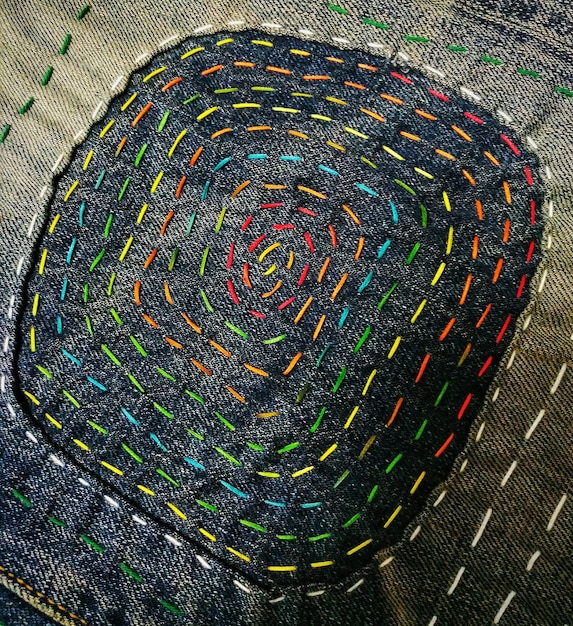
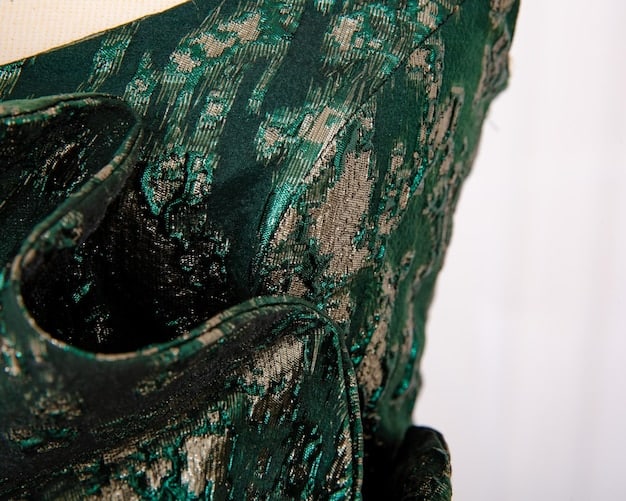
conclusion
Upcycled fashion has transcended its initial perception as a niche movement, emerging as a powerful force for sustainability and innovation within the global apparel industry. By reimagining discarded materials and giving them new life, it not only addresses the pressing environmental challenges posed by textile waste but also fosters a rich landscape of artistic expression and unique design. The journey from necessity to a sophisticated art form highlights a profound shift in values, emphasizing resourcefulness, individuality, and a deeper connection to our material world. While scaling challenges remain, continuous innovation in sourcing, design, and consumer engagement promises a bright future for upcycling. It stands as a testament to the idea that creativity, combined with conscious choices, can lead fashion towards a truly circular economy, where every garment tells a story of transformation and purpose.



